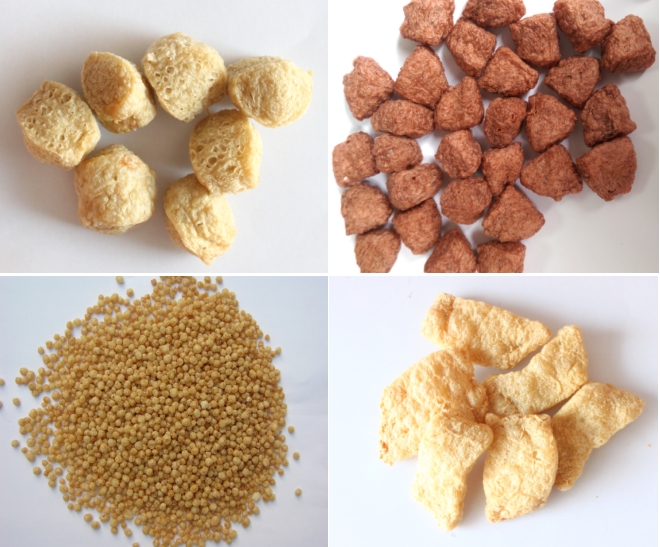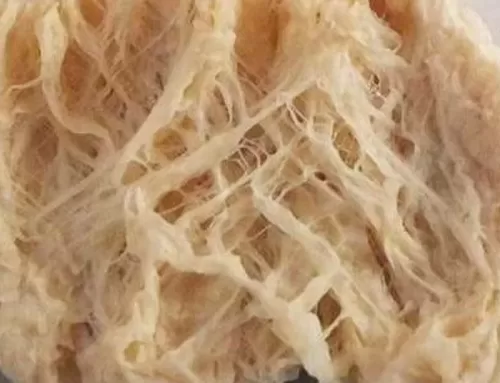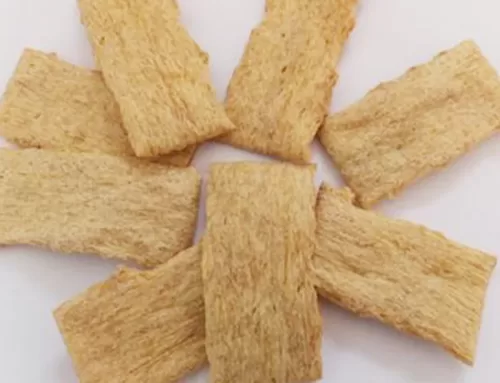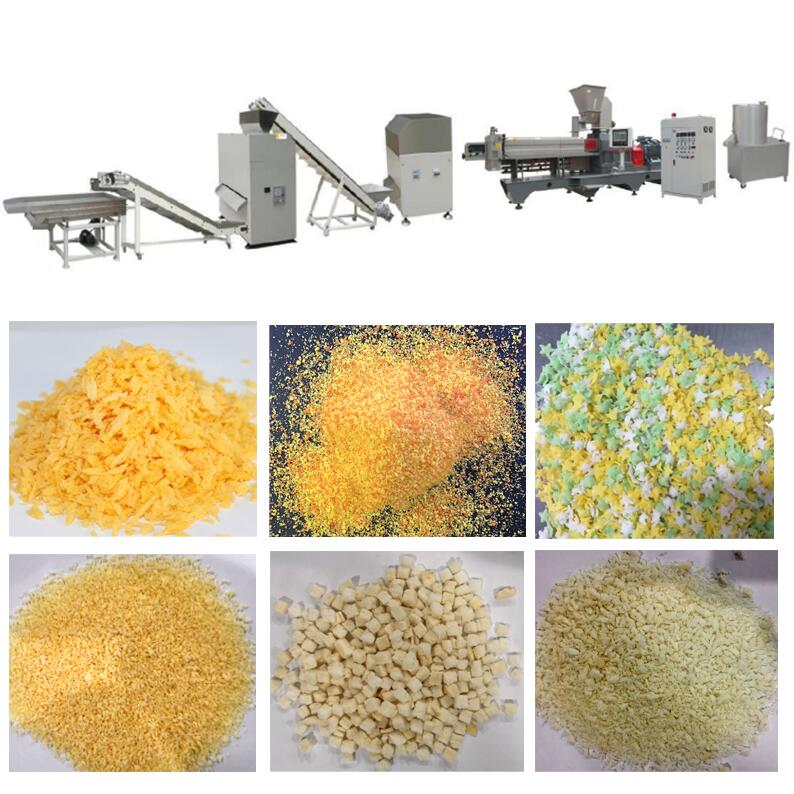150-300 kg/h Soya Chunks/ Nuggets/Badi Making Machine
I. Introduction of Soya Chunks/ Nuggets/ Badi
Soya chunks, also known as soya nuggets or soya badi, is a textured vegetable protein (TVP). Soybean textured protein uses cold-pressed soybean meal as the main raw material, supplemented with gluten powder. The material then undergoes textural changes under the specific pressure, temperature and shear of the twin-screw extruder, and expands into a spongy extrudate with certain strength and toughness. The extrudate contains high protein and can be used as a raw material for various snack foods and prepared dishes.

II. Parameters of 150-300kg/h Soya Chunks/ Nuggets/ Badi Making Machine
| Capacity | 150-300 kg/h |
| Energy/Power | -Electric heating:
Installed power 144 kw -Other heating option: Natural gas/Diesel by burner or steam boiler |
| Installed Area | Around 50-70 square meters |
| Material | Defatted soya flour, mixed with gluten flour |
III. Features
- Finished Food Quality Ensured: Optimal extrusion solution, premium equipment design, and equipment processing ensure high-level and stable production.
- High Output: High designed capacity; minimal material loss;
- Less Energy: High mechanical coordination, low wear; optimized heating, thermal transfer& insulation details, low heat loss
- Low Production Cost: Flow production, precise control of each process
- Simple and Low Cost Maintenance: Modular structure, easy operation. Lifetime after-sales service
- Safe Material: High-quality food-safe materials for all food contact part
- Failure Rate: Nearly zero failure as long as preventive maintenance
IV.The general flow chart for Making Soya Chunks/ Nuggets/ Badi
- Step 1: Crushing
- Step 2: Mixing
- Step 3: Extruding& cutting
- Step 4: Drying (to reduce the water content to 8%)
- Step 5: Seasoning(optional, it’s to produce flavoured textured veggie protein)
- Step 6: Cooling before packing
- Step 7: Packing
Soya chunks processing machine working details :
1)The mixer mixes the dry powder (soybean meal, gluten powder) evenly. 2) Soy textured protein extrusion process can be conducted in a standard twin-screw extruder. The soybean meal/wheat dry powder mixture was fed at a constant rate while raw water was added to the extruder. The water content should be less than 50%. 3) Set heating and cooling zones temperature, screw speed, pressure, etc., and the extrusion process starts. Due to the rapid temperature and pressure changes in the extrusion cavity, the food product tends to expand rapidly as it exits the die, creating crunchy texture. 4) The protein puffs are transferred to the drying oven. The ovens are designed as single or multiple layers depending on the throughput and final moisture content requirements. By setting the drying temperature and time, semi-finished soybean TVP is finally obtained. 5) According to market demand, soybean textured protein can also be seasoned according to people’s taste preference, such as chicken flavor, pork flavor, beef flavor, etc. This can be realized either via adding chicken/pork/beef powders into the recipes before extrusion or coating the seasoning powder before packing.
V. Components of Soya Chunks/ Nuggets/ Badi Making Machine
- Crusher
- Flour mixer
- Twin-screw tvp extruder
- Chiller
- Vibration spreader
- Dryer
- Seasoning machine(optional, it’s to produce flavoured textured veggie protein)
- Cooling machine
- Automatic packing machine
- Controlling system (PLC/or instrument control options)
- Complete conveyors
- Burner/Steam boiler (Optional)
VI. More
Flexibility
- Different formulations:The texrured soy protein fibrous- structure quality is largely effected by the extrusion parameters, including temperature, moisture, feed rate, barrel temperature, shear, pressure & temperature at die and other mechanical properties. Therefore, by adjusting all these extrusion parameters of the extruder, different formulations can be flexibly realized. The operation is convenient, the texture is uniform and continuous production is possible.
- Multi material: The twin-screw extrusion process is applicable to a wide range of raw materials, including peanut protein powder, wheat protein powder, and pea protein powder, so as to produce various TVP (texrured vegetable protein); Other raw materials, such as starch can be supplemented to optimize the strength, elasticity and fibrosis of TVP.
- Shapes: By changing different extrusion dies, you can produce soya TVP in various shapes, such as soya chunks/nuggets/badi, flakes, strips, balls, pellets, etc. Dayi provides custom mold service.
- Laboratory extrusion customization service: If you pay attention to formula innovation and new product development while running a professional production line, we recommend that you also have a micro laboratory extruder for testing and adjusting the new formulations.








